
Hello, and happy Sunday! This week Alex Duffy surveys the current defining moment in AI: Government officials with surprisingly informed views weighed in on AI’s role in society, the major labs announced big model updates, and key figures sketched out competing visions of the future. It’s a pivotal moment in AI’s evolution—scroll down to read more about that and everything else we published last week.
In the meantime, next week we’re doing a quarterly "think week," so in lieu of publishing new material, we’ll spend our time coming up with new ideas and products that can help us improve how we do our work—and, more importantly, your experience as a member of our community.—Kate Lee
Was this newsletter forwarded to you? Sign up to get it in your inbox.
Release notes
AI's defining moment
Headlines blared this week in reaction to U.S. Vice President JD Vance’s speech at the Paris AI Action Summit. Many of them understandably focused on Vance’s forceful framing of the U.S. as the global leader in AI, and the Trump administration’s intent for it to stay that way. That framing came with a hefty dose of thinly veiled warnings that European-style regulation and constraints on the power of tech companies weren’t compatible with the Trump administration’s vision for fostering AI.
But underneath the bluster was something more interesting: positivity. Vance described AI as “one of the most promising technologies in generations,” highlighting how it can augment rather than replace workers. That’s a debatable point, to say the least (see, for example, my colleague Evan Armstrong’s piece this week on AI’s potential to disrupt labor). But perhaps most intriguing was Vance’s pledge that “Our schools will teach students how to manage, supervise, and interact with AI.”
That’s a sharp turn in AI policy discourse. Normally, the conversation stays surface-level, maybe nodding to regulation or job disruption. Vance’s statement is one of the first times we’ve heard a high-ranking official emphasize AI literacy in schools.
Regardless of your political beliefs or feelings about the Trump administration, the speech was correct on at least one significant point: We can’t just fear AI or hope it magically works out. We need to think clearly about how we want to use it.
In order to start preparing the next generation for the AI era, we have to actively engage with this rapidly developing technology and create incentives to encourage students to achieve something meaningful.
A wave of new AI tools
While the AI Action Summit was going on, the urgency of the situation was underscored by a blitz of product releases from AI labs. Google expanded its Gemini 2.0 family with new, cost-effective models and enormous context windows, enabling cheaper yet larger-scale tasks. OpenAI shared its roadmap toward GPT-4.5 and GPT-5, aiming for a future where AI “just works” across tasks without the user needing specialized knowledge. According to CEO Sam Altman, some releases will arrive in the coming weeks, matching the timeline Elon Musk has laid out for xAI rolling out its new “Grok 3.”
TLDR: The next generation of AI is imminent, and companies are working feverishly to be at the forefront of it.
The practical result of all this is that an individual will continue to become more capable than ever before. You can use AI to generate fully-coded apps, bring projects to life that once required entire teams, or even push forward on cutting-edge research. The question is which problems we aim all this energy at—and whose vision guides us.
Source: Anthropic Economic Index.Different visions, same urgency
Some of AI’s most influential leaders are not waiting to share their visions.
OpenAI’s Altman released his observations on AI’s accelerating capabilities and the importance of ensuring broad benefits to humanity. While he believes AI can boost productivity and quality of life, it’s still unclear how exactly to develop and implement the technology to bring about this supposed new abundance.
Anthropic published an economic index in what jobs AI is being used today (see chart above). About 36 percent of occupations use AI in at least a quarter of tasks, with software development as a standout. Most AI usage, 57 percent, augments human work rather than fully automates it.
CEO Dario Amodei’s essay from last October, "Machines of Loving Grace," is worth considering here. In it, he envisions a positive-sum future where AI addresses major challenges like disease, poverty, and governance. The essay plus the index could be used as a rough approximation of domains for which Anthropic (which produces Claude) might optimize performance in its new model (also rumored to be coming soon).
Replit’s CEO Amjad Masad sees software creation splitting into two paths: specialized “close to the metal” programmers, and everyone else who uses AI to tackle a wide array of tasks. That implies a future where workers are rewarded for developing either a set of extremely specialized skills, or for becoming effective generalists.
Hello, and happy Sunday! This week Alex Duffy surveys the current defining moment in AI: Government officials with surprisingly informed views weighed in on AI’s role in society, the major labs announced big model updates, and key figures sketched out competing visions of the future. It’s a pivotal moment in AI’s evolution—scroll down to read more about that and everything else we published last week.
In the meantime, next week we’re doing a quarterly "think week," so in lieu of publishing new material, we’ll spend our time coming up with new ideas and products that can help us improve how we do our work—and, more importantly, your experience as a member of our community.—Kate Lee
Was this newsletter forwarded to you? Sign up to get it in your inbox.
Release notes
AI's defining moment
Headlines blared this week in reaction to U.S. Vice President JD Vance’s speech at the Paris AI Action Summit. Many of them understandably focused on Vance’s forceful framing of the U.S. as the global leader in AI, and the Trump administration’s intent for it to stay that way. That framing came with a hefty dose of thinly veiled warnings that European-style regulation and constraints on the power of tech companies weren’t compatible with the Trump administration’s vision for fostering AI.
But underneath the bluster was something more interesting: positivity. Vance described AI as “one of the most promising technologies in generations,” highlighting how it can augment rather than replace workers. That’s a debatable point, to say the least (see, for example, my colleague Evan Armstrong’s piece this week on AI’s potential to disrupt labor). But perhaps most intriguing was Vance’s pledge that “Our schools will teach students how to manage, supervise, and interact with AI.”
Sponsored by: LTX Studio
Take your idea to the next level
Good ideas are all you need. Everything else can be done with the help of AI. Use LTX Studio to storyboard, develop, and bring your vision to life in seconds. Then, dive into their suite of ever-growing customization features to refine your creative vision:
- Convey realistic emotions in every shot—even down to facial expressions.
- Match any voice and dialogue you want to any character.
- Control a scene’s location, lighting, and even weather.
Tell authentic, inspiring, and interesting stories, without cutting corners.
That’s a sharp turn in AI policy discourse. Normally, the conversation stays surface-level, maybe nodding to regulation or job disruption. Vance’s statement is one of the first times we’ve heard a high-ranking official emphasize AI literacy in schools.
Regardless of your political beliefs or feelings about the Trump administration, the speech was correct on at least one significant point: We can’t just fear AI or hope it magically works out. We need to think clearly about how we want to use it.
In order to start preparing the next generation for the AI era, we have to actively engage with this rapidly developing technology and create incentives to encourage students to achieve something meaningful.
A wave of new AI tools
While the AI Action Summit was going on, the urgency of the situation was underscored by a blitz of product releases from AI labs. Google expanded its Gemini 2.0 family with new, cost-effective models and enormous context windows, enabling cheaper yet larger-scale tasks. OpenAI shared its roadmap toward GPT-4.5 and GPT-5, aiming for a future where AI “just works” across tasks without the user needing specialized knowledge. According to CEO Sam Altman, some releases will arrive in the coming weeks, matching the timeline Elon Musk has laid out for xAI rolling out its new “Grok 3.”
TLDR: The next generation of AI is imminent, and companies are working feverishly to be at the forefront of it.
The practical result of all this is that an individual will continue to become more capable than ever before. You can use AI to generate fully-coded apps, bring projects to life that once required entire teams, or even push forward on cutting-edge research. The question is which problems we aim all this energy at—and whose vision guides us.
Source: Anthropic Economic Index.Different visions, same urgency
Some of AI’s most influential leaders are not waiting to share their visions.
OpenAI’s Altman released his observations on AI’s accelerating capabilities and the importance of ensuring broad benefits to humanity. While he believes AI can boost productivity and quality of life, it’s still unclear how exactly to develop and implement the technology to bring about this supposed new abundance.
Anthropic published an economic index in what jobs AI is being used today (see chart above). About 36 percent of occupations use AI in at least a quarter of tasks, with software development as a standout. Most AI usage, 57 percent, augments human work rather than fully automates it.
CEO Dario Amodei’s essay from last October, "Machines of Loving Grace," is worth considering here. In it, he envisions a positive-sum future where AI addresses major challenges like disease, poverty, and governance. The essay plus the index could be used as a rough approximation of domains for which Anthropic (which produces Claude) might optimize performance in its new model (also rumored to be coming soon).
Replit’s CEO Amjad Masad sees software creation splitting into two paths: specialized “close to the metal” programmers, and everyone else who uses AI to tackle a wide array of tasks. That implies a future where workers are rewarded for developing either a set of extremely specialized skills, or for becoming effective generalists.
Palmer Luckey, the CEO of the defense tech firm Anduril, went in a radically different direction. He announced research and development into “soldier enhancement” systems that could, in his words, turn warfighters into “superheroes.” This is AI for defense—a difficult subject to even talk about with a level head, and a stark contrast to Anthropic’s humanitarian emphasis.
These divergent visions highlight that AI can shift society in many ways: from improving global health to restructuring entire workforces and modernizing militaries. Which path we follow depends on the goals we set and incentives we put in place.
What do we want to happen next?
That’s the core question. The technology is accelerating, with new AI releases arriving at a breakneck pace. Yet beyond “better productivity,” we rarely define why or to what end we’re building these models. There are many good possible answers. AI is an amplifier of human intentions. So the real debate is: Which intentions do we want amplified?
This isn’t just an abstract question for CEOs or policymakers. Education is a prime example. Vance’s comment about teaching AI management skills in school signals a pivot—no longer preparing students for a future of basic memorization or mechanical tasks, but for a world where critical thinking, creativity, and collaboration with AI matter most. Whether you love or loathe the administration, that’s an idea worth exploring and refining. Could students be empowered to tackle big problems with AI at their side, rather than go through their education anxious about being replaced?
AI might let us do more than ever, but it won’t decide for us what’s worth doing.—Alex Duffy
Are you looking to integrate AI into your business? At Every Consulting, we’re working with companies on AI training, adoption, and innovation. If you’re interested in partnering with us, reach out.
Now, next, nixed
The current state of developer interfaces—from manual development environments to managing copilots to vibes-based iOS agents.
Every illustration.Knowledge base
"A New Way to Read" by Naveen Naidu Mummana/Source Code: Imagine having a friend who has read every book ever written and never gets tired of your questions. That's what Naveen, an Every Studio entrepreneur in residence, built with Kairos—an AI reading companion that transforms passive reading into an interactive dialogue. Read this if you like to read. 📑 Try Kairos out for yourself, and let us know what you think.
"Introducing Every Consulting" by Dan Shipper and Brandon Gell: We’ve spent the last nine months quietly helping companies move beyond AI paralysis, and now we’re opening our doors. Our approach is about custom-fit training, tailored to your teams. Read this if you’re ready to inject fresh life into your product and want to know what it’s like to work with us, and reach out if you’d like to learn more.
"Does OpenAI’s Deep Research Put Me Out of a Job?" by Evan Armstrong/Napkin Math: Sam Altman says OpenAI's new tool could replace millions of jobs. Evan uses a combination of historical research and first-hand experience to fact-check that claim. Read this for an analysis of deep research’s potential to remake our entire knowledge economy.
🎧 "How Nat Eliason Made $200,000 in a Week Teaching AI" by Dan Shipper/AI & I: Nat Eliason has mastered the art of surfing tech waves, and his latest venture made $200K in pre-sales in just seven days. In this episode of AI & I, Dan dives deep with Nat to explore how AI is revolutionizing both coding and writing, including a live demo. Watch this if you want to learn how to spot trends early and turn them into profitable ventures. 🎧🖥 Watch on X or YouTube, or listen on Spotify or Apple Podcasts.
"How Khe Hy Finds ‘Extreme Simplicity’" by Scott Nover/Superorganizers: Former BlackRock executive-turned-RadReads founder Khe Hy has “regressed” back to pen and paper since he first shared his productivity hacks with us five years ago. Turns out, the most efficient approach might be barely having a system at all. Read this if you’re looking for permission to delete half your productivity apps and still get more done.—Aleena Vigoda
From Every Studio
A new AI reading companion: Every Studio entrepreneur in residence Naveen Naidu Mummana built Kairos, an AI reading companion, to help you carve space for deeper conversations with the content you read. Kairos feels like talking to that one friend who’s read every book and has the answer to all of your questions. The app combines old-school reading comprehension with an Apple Books-esque interface. More than 650 beta-testers have signed up so far. Try it out on TestFlight yourself, and let us know what you think.
Create Spirals on the go: We’re launching our creative automation tool Spiral as a browser extension, so you can spin up a Spiral wherever you read online. When you find content you want to transform, you can use the extension to automatically input content for you into the Spiral of your choice—turning long-form essays, meeting notes, and podcast transcripts into recaps, X threads, and more. Keep an eye out for an official announcement.
Spiral extension. Source: Every.
Tell us what you think of Cora: A few months into the launch of our email product Cora, which has a waitlist of more than 10,000 people, we’re curious to hear what you think of the product. Take our Freeform survey (built by entrepreneur in residence Cassius Kiani, Freeform is like TypeForm, but better) to help us understand what you want to see more of from your email experience.
Sparkle’s hard paywall experiment: Two weeks ago, we added a hard paywall to the onboarding flow of Sparkle, which helps you declutter your computer so you can log off to a clean screen at the end of your work day. Users have to add an uncharged card number before beginning their free trial. According to product guru Lenny Rachitsky, limited-time free trials tend to see higher conversion rates because they self-select for users who are more ready to buy. So far, results are positive: Thirty percent of users are upgrading to the paid version, exceeding market benchmarks.—AV
Hallucination
Our dream work setup: iMac monitor plus the MacBook keyboard and trackpad.
Source: X/Lucas Crespo.That’s all for this week! Be sure to follow Every on X at @every and on LinkedIn.
We build AI tools for readers like you. Automate repeat writing with Spiral. Organize files automatically with Sparkle. Write something great with Lex. Deliver yourself from email with Cora.
We also do AI training, adoption, and innovation for companies. Work with us to bring AI into your organization.
Get paid for sharing Every with your friends. Join our referral program.
Ideas and Apps to
Thrive in the AI Age
The essential toolkit for those shaping the future
"This might be the best value you
can get from an AI subscription."
- Jay S.
Join 100,000+ leaders, builders, and innovators

Email address
Already have an account? Sign in
What is included in a subscription?
Daily insights from AI pioneers + early access to powerful AI tools
Ideas and Apps to
Thrive in the AI Age
The essential toolkit for those shaping the future
"This might be the best value you
can get from an AI subscription."
- Jay S.
Join 100,000+ leaders, builders, and innovators

Email address
Already have an account? Sign in
What is included in a subscription?
Daily insights from AI pioneers + early access to powerful AI tools

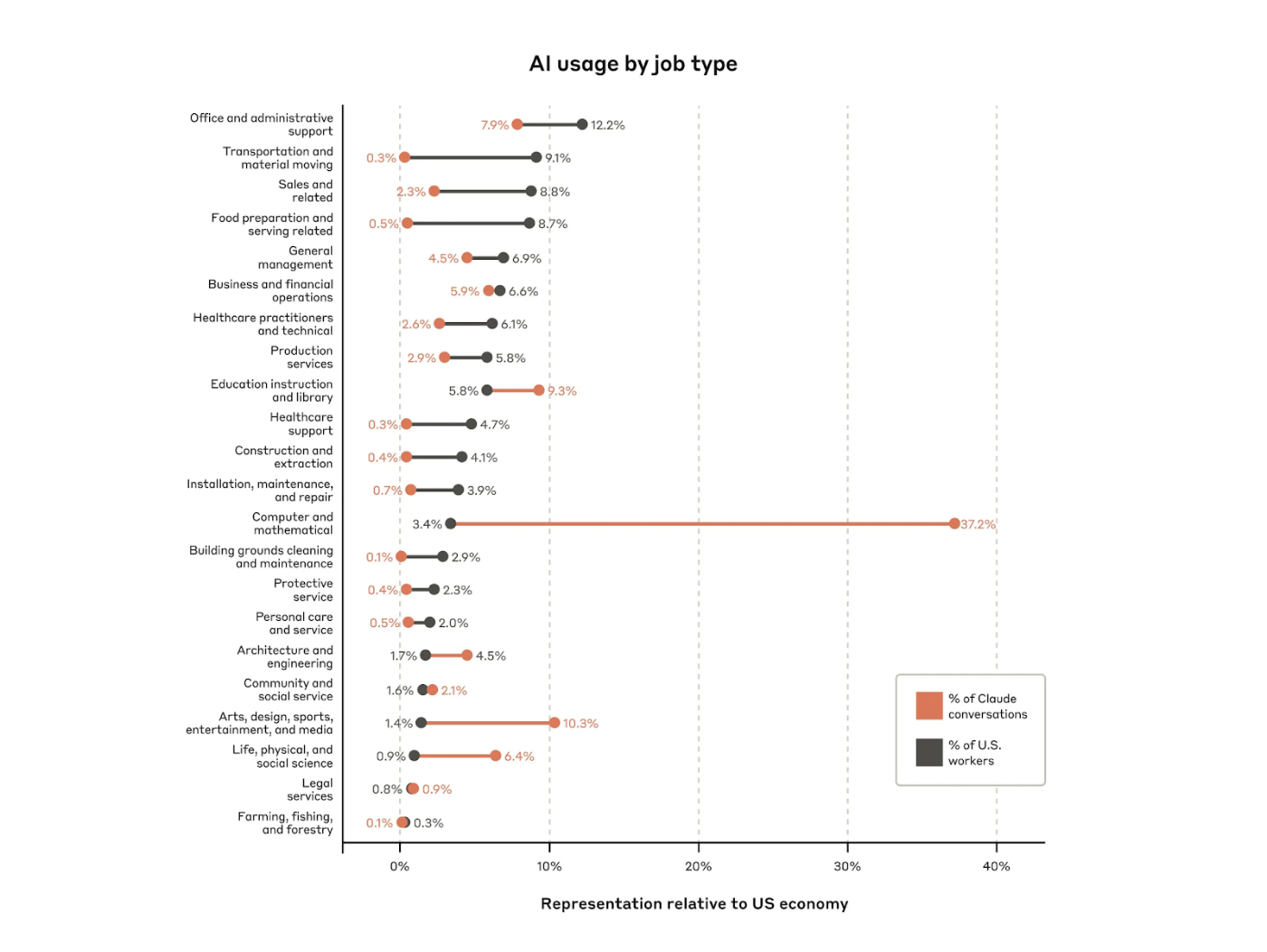
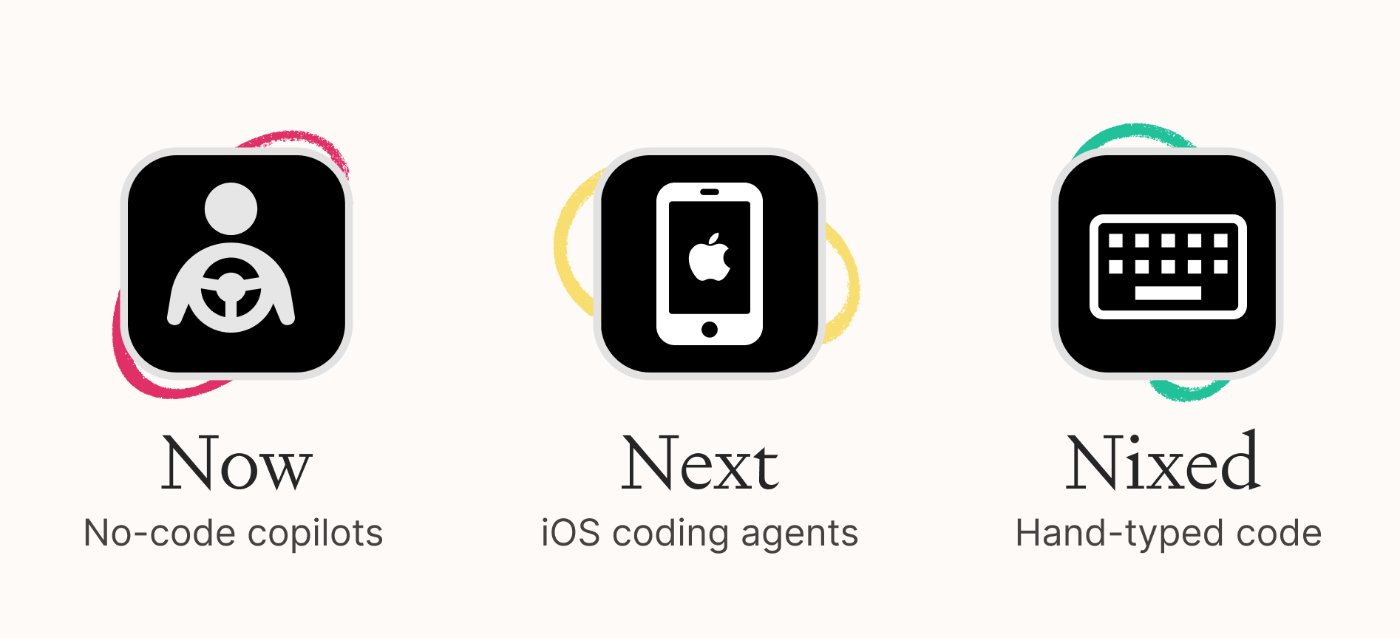
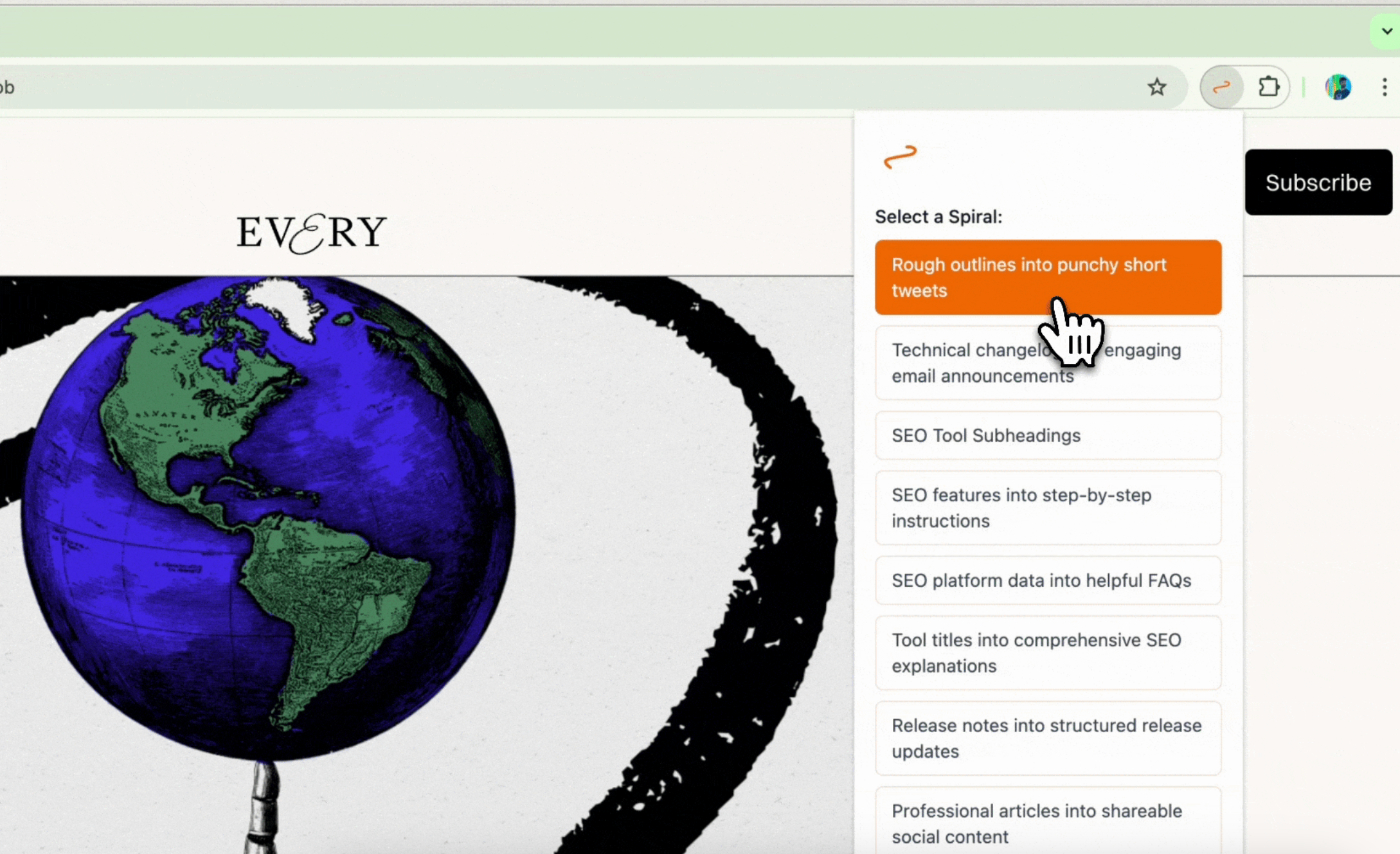

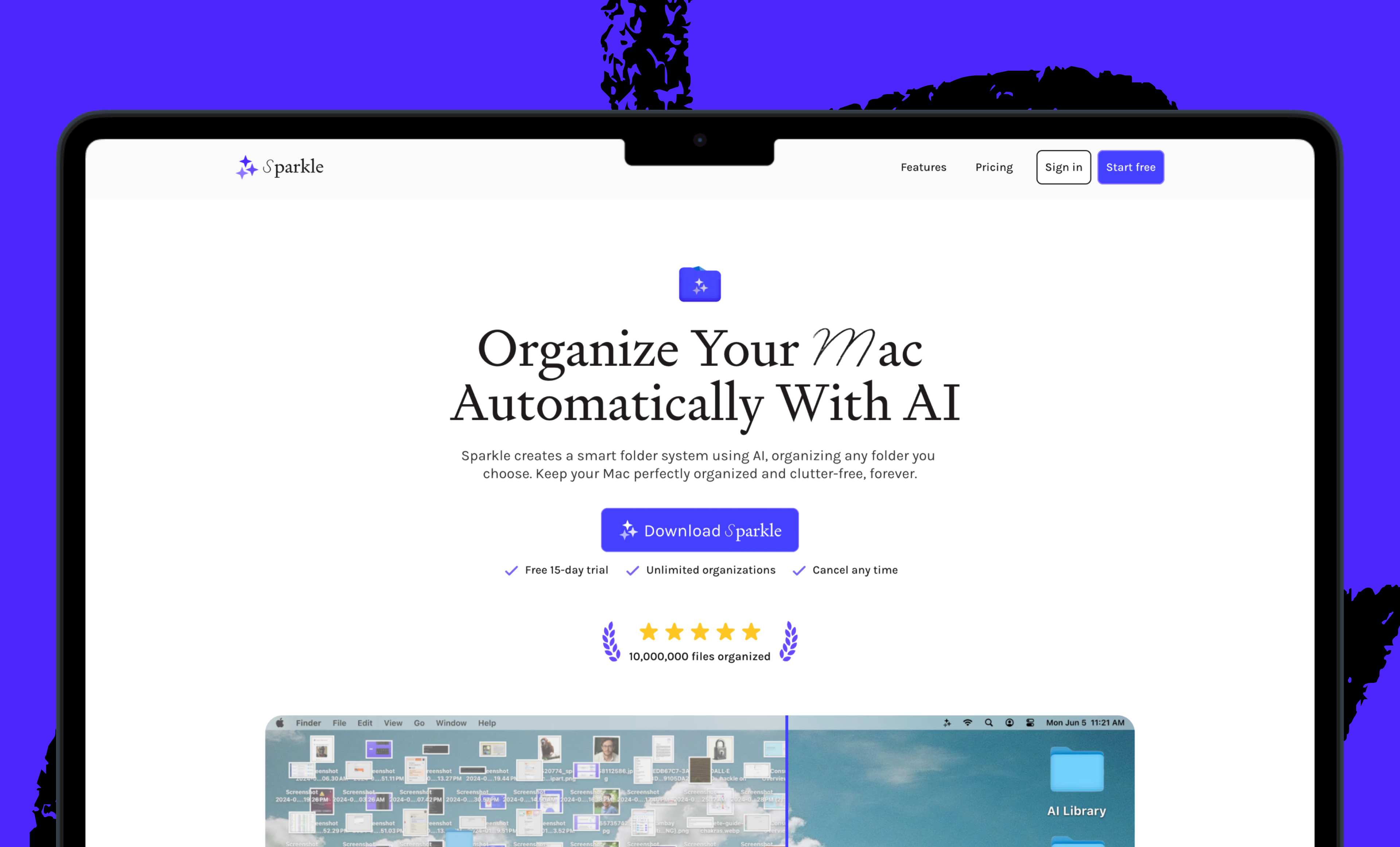
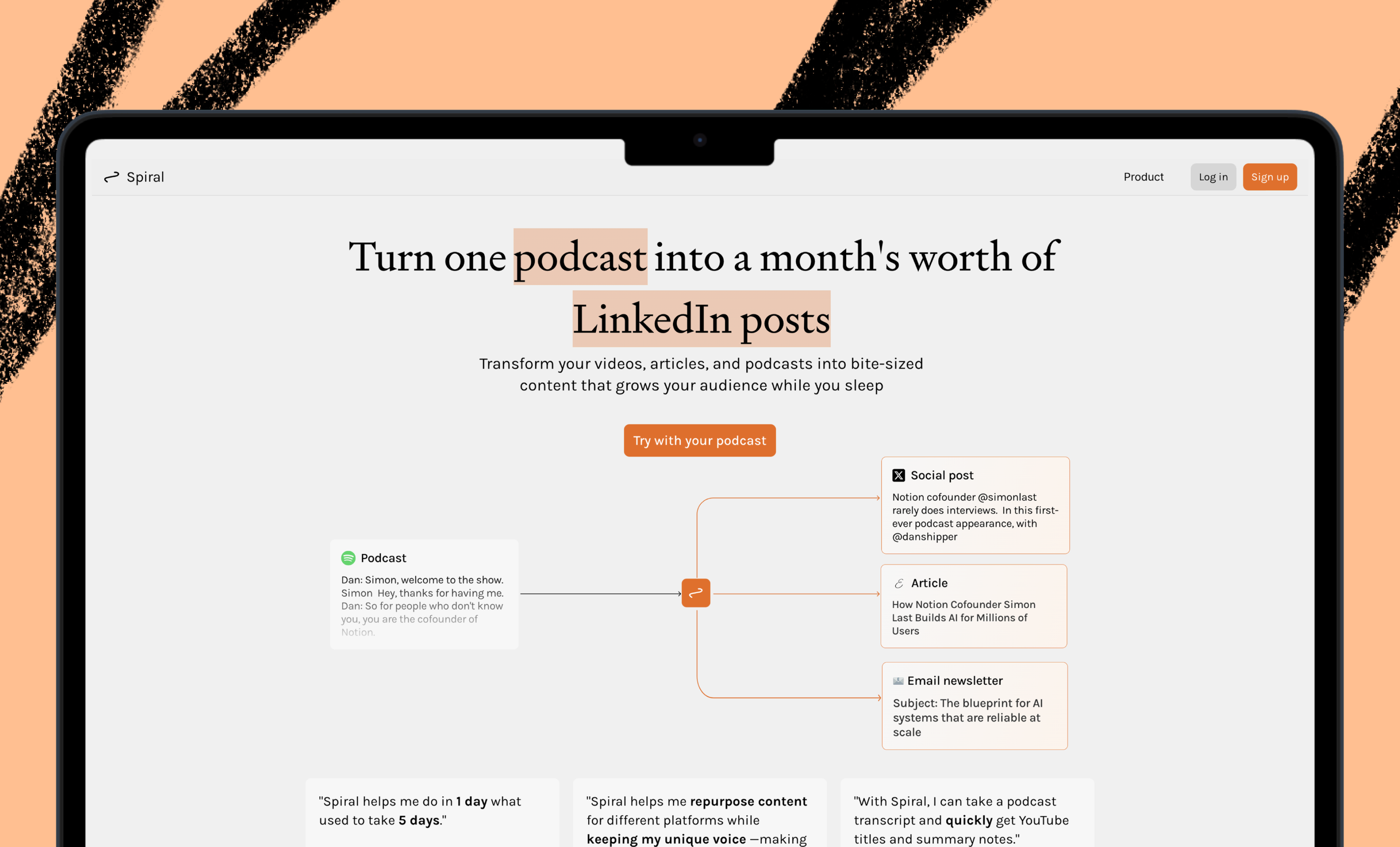
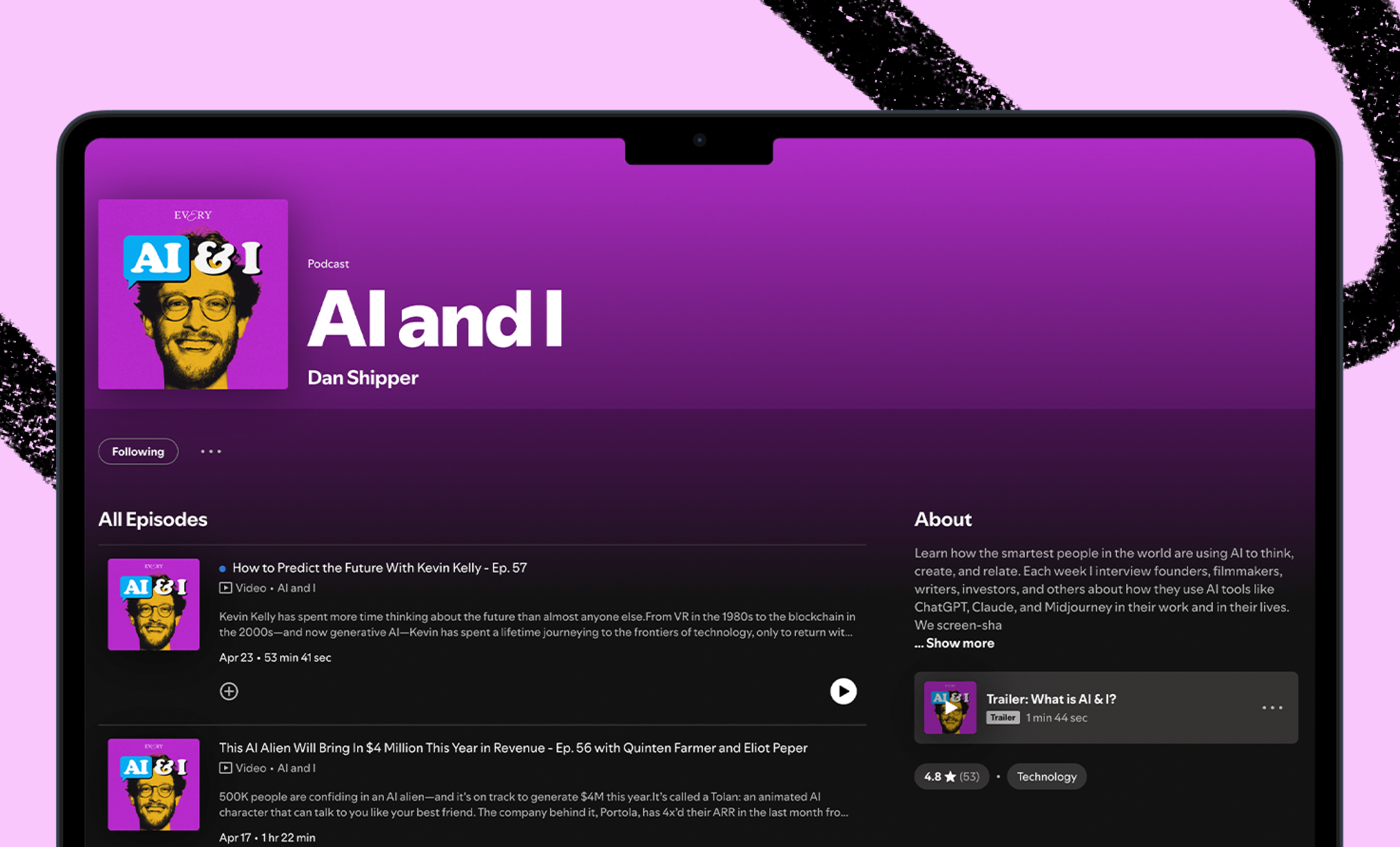

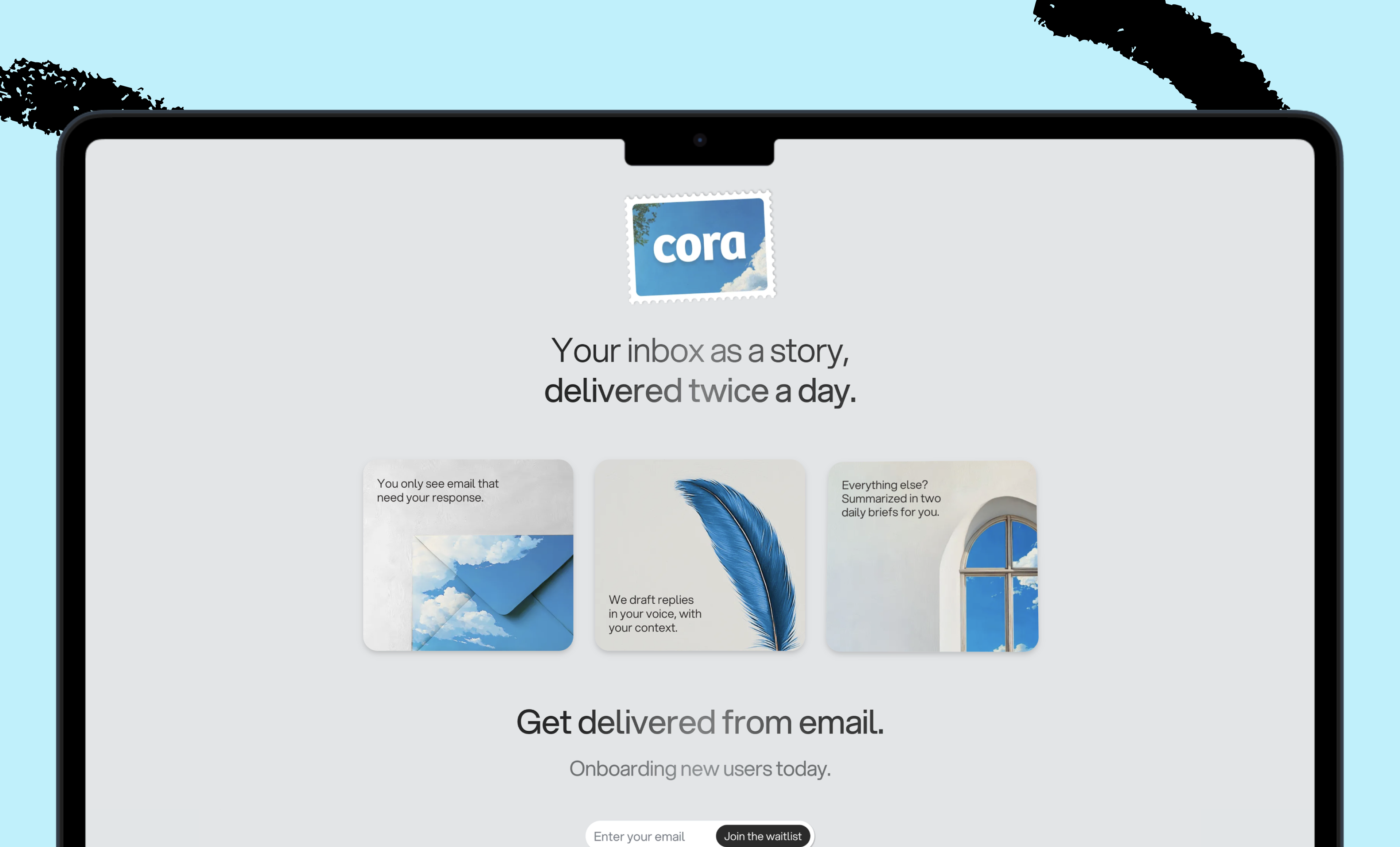


.png)
Comments
Don't have an account? Sign up!
Considering the positions this administration has taken, I find myself feeling concerned with their pro-AI attitudes. Their push of AI into K-12 classrooms especially gives me pause. What is it they want? What’s their angle?
@renwickme same...
@renwickme Yeah, I hear you. This administration is pushing AI hard, and given everything else they’re doing, it’s worth questioning why. No matter who’s in charge though, AI can clearly help us learn* but it's important to ask: What should we learn?
AI could enable more voice-based learning and testing–maybe boosting communication and making classes more engaging. But as always, there are trade-offs. Which ones are worth making? Curious how you see it.
*One example: https://blogs.worldbank.org/en/education/From-chalkboards-to-chatbots-Transforming-learning-in-Nigeria
@AlxAi Thanks for sharing the research summary. "nearly two years of typical learning in just six weeks" - impressive. I've used it during professional development workshops, showing teachers how to leverage AI to develop more effective curricula in less time. It's going to be in interesting journey.
My personal worry is that the responses these LLMs will generate could be biased toward the creators and their agenda, and/or lead to people relying on AI for information instead of accessing and investigating the source directly.
@renwickme I totally agree with you. Both of those worries have led me to the conclusion that curating really high-quality data sets is going to become extremely important (and already is). An extreme version of this would be state-level "Libraries of Alexandria" that house the "canon" of what is believed to be true for that nation, which guides their AI. It may not be that extreme, but I see us moving in that direction.